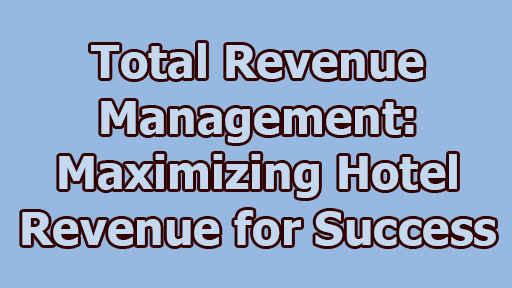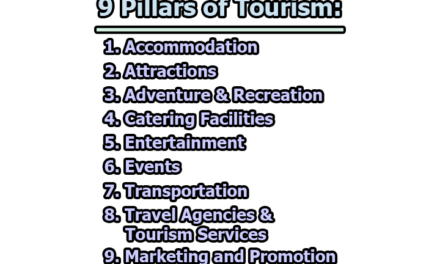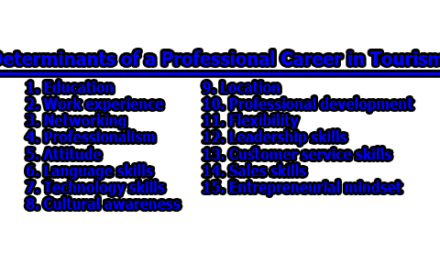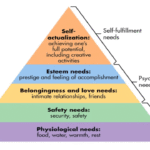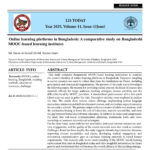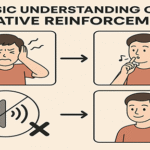Total Revenue Management: Maximizing Hotel Revenue for Success
In the ever-evolving landscape of the hospitality industry, the concept of revenue management has gained paramount importance for hotels striving to maximize their profitability. Traditionally, revenue management in hotels was centered around optimizing room revenue. However, the paradigm has shifted, and the industry is now witnessing the rise of total revenue management, a comprehensive approach that encompasses all revenue streams within a hotel. In this article, we delve into the significance of total revenue management, the advantages it offers, and practical strategies for its successful implementation.
Total Revenue Management: A Paradigm Shift
For nearly a decade, discussions about incorporating all revenue streams within revenue management have been prevalent in hospitality circles. The concept of total revenue management aims to capitalize on the untapped potential of various revenue streams, such as food and beverage, ancillary services, spa treatments, and event spaces. This approach recognizes that a holistic view of revenue streams can lead to more informed decision-making and increased profitability.
In the past, hurdles like technological limitations and a lack of awareness hindered the adoption of total revenue management strategies. However, recent advancements in hotel technology have equipped revenue executives with the tools needed to make strategic and data-driven choices.
Diversifying Revenue Streams:
Hotels are now exploring diverse avenues to generate revenue even during low-occupancy periods. This shift has brought about significant modifications in revenue generation strategies, with total revenue management at the forefront. The essence of total revenue management lies in simultaneously measuring the interconnectedness of revenue streams and devising pricing strategies that optimize a hotel’s overall revenue performance.
Consider the example of a casino hotel that comps room nights for high-rolling guests. By measuring the room cost against the bets placed, the hotel can determine the profitability of such arrangements. Similarly, tactics like upselling and offering discounted spa treatments during off-peak times can contribute to increased turnover and footfalls.
Advantages of Total Revenue Management:
Total revenue management offers a range of benefits that extend beyond traditional room-focused revenue management strategies:
- Maximizing Revenues Across All Streams: A hallmark advantage of TRM lies in its ability to tap into previously underutilized revenue streams. Traditionally, hotels have predominantly focused on room revenue, often neglecting potential earnings from ancillary services such as food and beverage, spa treatments, event spaces, and other offerings. TRM compels hoteliers to broaden their perspective, recognizing that each revenue stream contributes to the overall financial health of the property. By integrating these diverse income sources into a unified strategy, hotels can achieve enhanced revenue diversification and overall profitability.
- Strategic Decision-Making: TRM shifts revenue management from a narrow room-centric approach to a comprehensive, strategic viewpoint. This strategic decision-making involves understanding how changes in one aspect of the business impact others. For instance, a decision to lower room rates during a specific period can be complemented by targeted offers on spa treatments, resulting in increased overall revenue. By assessing the interplay between various revenue streams, hotels can make informed choices that optimize profitability and customer satisfaction.
- Optimizing Cost Structure: Not all revenue streams are created equal in terms of profit margins. TRM empowers hotels to identify high-margin offerings and strategically allocate resources to them. By understanding the profitability of each revenue stream, hotels can streamline costs and staffing levels to match the potential earnings. For example, a hotel can adjust staffing hours at its restaurant based on demand patterns, ensuring optimal service levels while managing costs during quieter periods.
- Coordinated Workforce and Departments: TRM unites various departments under a common goal—maximizing revenue. This alignment fosters a collaborative environment where departments work cohesively to achieve shared objectives. By breaking down revenue goals into department-specific targets, staff members are motivated to contribute to the overall success of the hotel. This collaborative approach not only enhances communication and coordination but also bolsters staff morale and engagement.
- Efficient Asset Utilization: In the hospitality industry, assets such as event spaces, restaurant seats, and spa treatment rooms are perishable commodities. During off-peak periods, these assets often remain underutilized, leading to missed revenue opportunities. TRM encourages hotels to implement creative strategies to optimize the utilization of these assets during low-demand times. For instance, offering discounted meeting packages or spa treatments can attract bookings that might not have materialized otherwise, contributing to increased revenue.
- Enhanced Productivity and Performance: The primary goal of TRM is to increase revenue while simultaneously reducing costs, leading to improved profitability. The direct impact of these efforts becomes evident in the bottom line, reflecting increased productivity and financial performance. As revenue streams are maximized and costs are optimized, hotels can reinvest resources into improving guest experiences, staff training, and property upgrades, thereby contributing to a cycle of continuous improvement.
- Portfolio and Brand Performance: For hotel chains and groups, implementing TRM strategies across their portfolio can yield far-reaching benefits. A holistic approach to revenue management enables centralized decision-making and sharing of best practices. As a result, brand consistency is upheld, and individual properties can leverage the success of others within the portfolio. This synergistic effect enhances the brand’s presence in the market and strengthens its competitive edge.
Tips for Successful Implementation of Total Revenue Management:
Embracing total revenue management doesn’t have to be a complex endeavor. Here are five steps to initiate the journey:
1. Cultivate a TRM Mindset Across All Levels: To embark on the path of effective TRM implementation, it is crucial to instill a TRM mindset across all levels of the organization. From top-level executives to frontline staff, everyone should recognize the importance of viewing revenue streams holistically. Encourage a cultural shift that emphasizes collaboration and interdepartmental communication to align all efforts toward a common goal—maximizing overall revenue.
Hold regular training sessions and workshops to educate employees about the significance of TRM, its benefits, and its potential impact on the hotel’s success. Foster an environment where employees are encouraged to think creatively and propose revenue-enhancing ideas that span various departments.
2. Education and Training for Stakeholders: Education and training play a pivotal role in ensuring the successful adoption of TRM practices. It’s essential to provide all stakeholders, including revenue managers, department heads, and front-line staff, with a comprehensive understanding of TRM principles, methodologies, and the strategic rationale behind them.
Invest in professional development programs, workshops, and seminars that focus on TRM. Engage industry experts to deliver insightful sessions that shed light on real-world TRM success stories, providing practical insights and strategies for implementation.
3. Implement TRM Strategies Across All Departments: For TRM to yield optimal results, it’s imperative to implement revenue management strategies across all relevant departments. While room revenue is undoubtedly a significant contributor, other revenue streams like food and beverage, spa treatments, and event spaces also hold tremendous potential.
Collaborate with department heads to align strategies with the overall TRM approach. Encourage cross-functional teams to work together in designing and implementing revenue-boosting initiatives that span various departments. For example, a joint effort between the F&B team and the events team can result in combined packages that attract both dining and event bookings.
4. Leverage Technology and Tools: Implementing TRM effectively necessitates the use of advanced Revenue Management Systems (RMS), tools, and data analytics platforms. These technologies enable data-driven decision-making and provide valuable insights into guest behavior, market trends, and demand patterns.
Invest in an RMS that can centralize data from all revenue streams, providing a comprehensive overview of the hotel’s revenue landscape. Leverage predictive analytics to anticipate demand fluctuations, enabling timely adjustments to pricing and offerings. Ensure that the chosen technology integrates seamlessly with existing systems to facilitate efficient data sharing and analysis.
5. Tailor-Make Strategies for Different Property Types: TRM strategies are not one-size-fits-all; they need to be tailored to suit different property types, market segments, and guest preferences. Whether the property is a large chain hotel or a boutique independent establishment, understanding the unique characteristics of each property is essential for successful TRM implementation.
Conduct thorough market research to identify the target audience, market trends, and competitive landscape specific to each property. Customize TRM strategies to align with the property’s strengths, catering to the preferences and needs of its guests. For instance, leisure-centric properties might focus on packages that cater to relaxation and entertainment, while business-oriented properties could offer tailored corporate packages.
Quantifiable Metrics in Total Revenue Management:
Key Performance Indicators (KPIs) play a crucial role in the successful implementation of total revenue management. Some vital KPIs to monitor for a comprehensive view of hotel revenue performance include:
a. Total Revenue Per Available Room (TRevPAR): Total Revenue Per Available Room (TRevPAR) is a fundamental metric that captures the combined revenue generated from all available revenue streams divided by the total number of available rooms. TRevPAR provides an all-encompassing snapshot of a hotel’s revenue performance, considering not only room revenue but also ancillary sources such as food and beverage, spa services, and more. Monitoring TRevPAR enables hotels to assess the overall health of their revenue streams and make informed decisions to optimize profitability.
b. Gross Operating Profit Per Available Room (GOPPAR): Gross Operating Profit Per Available Room (GOPPAR) takes revenue analysis a step further by incorporating operational costs. It factors in expenses related to operations, distribution, and overheads, giving a clear picture of how efficiently a hotel is managing its revenue streams while accounting for associated costs. This metric is invaluable for assessing the true profitability of each available room after considering operational complexities.
c. Customer Acquisition Cost (CAC): Customer Acquisition Cost (CAC) quantifies the expenses incurred to acquire a new guest or customer. In the context of TRM, understanding the CAC associated with each revenue stream offers insights into the effectiveness of marketing and sales efforts. By assessing CAC alongside revenue generated from acquired customers, hotels can optimize marketing campaigns and allocate resources where they yield the highest return on investment.
d. Customer Lifetime Value (CLV): Customer Lifetime Value (CLV) evaluates the total value a customer brings to a hotel over their entire relationship. In TRM, CLV provides a strategic perspective by enabling hotels to identify high-value customers across different revenue streams. By segmenting customers based on CLV, hotels can tailor marketing strategies and personalized offerings to enhance loyalty and maximize long-term revenue potential.
e. Revenue Per Available Seat Hour (RevPASH): For revenue streams like food and beverage, Revenue Per Available Seat Hour (RevPASH) quantifies the revenue generated from each available seat within a specific time frame. RevPASH is a valuable metric for optimizing seating arrangements, pricing strategies, and service efficiency in restaurants and dining spaces. Hotels can adjust seating capacities and operating hours based on RevPASH trends to optimize revenue potential.
f. Revenue Per Available Treatment Hour (RevPATH): In the context of spa services, Revenue Per Available Treatment Hour (RevPATH) evaluates the revenue generated from each available treatment hour. This metric enables spas to assess treatment room utilization and adjust pricing or offerings during peak and off-peak hours to maximize revenue.
g. Revenue Per Available Square Foot/Meter (RevPAF/M): For event spaces, Revenue Per Available Square Foot/Meter (RevPAF/M) measures the revenue generated per square foot or meter of event space. This metric helps hotels optimize event pricing, allocate resources efficiently, and offer tailored event packages to cater to various customer needs.
h. Inquiry Conversion Performance: In the context of meetings and events, Inquiry Conversion Performance evaluates the success rate of converting inquiries into confirmed bookings. This metric provides insights into the effectiveness of sales and marketing strategies for event spaces and allows hotels to fine-tune their sales efforts.
Open Pricing: A Total Revenue Management Strategy
Implementing an open pricing model can further augment total revenue management efforts. Unlike traditional fixed Best Available Rate (BAR) pricing, open pricing allows for more flexible rate adjustments based on demand fluctuations. This approach enables hotels to optimize rates for each distribution channel independently, thereby offering targeted pricing strategies.
Open pricing also empowers hotels to navigate through demand troughs by adjusting rates significantly lower than the BAR. This flexibility ensures that hotels can attract guests even during periods of low demand, contributing to increased occupancy and revenue.
To sum up, in the rapidly evolving hospitality landscape, total revenue management has emerged as a transformative strategy for hotels seeking to maximize profitability. By harnessing the potential of all revenue streams, from rooms to ancillary services, hotels can achieve increased revenues, reduced costs, and improved overall performance. The shift towards total revenue management requires a mindset change, education and training, technology integration, and the implementation of quantifiable metrics. With the adoption of an open pricing strategy, hotels can further optimize rates and enhance revenue generation. As total revenue management gains prominence, hotels that embrace this approach are poised for success in an increasingly competitive industry.
Frequently Asked Questions (FAQs):
What is Total Revenue Management (TRM)?
Total Revenue Management is an innovative approach that goes beyond traditional revenue management practices. It involves optimizing and leveraging all revenue streams within a hotel, including room revenue, food and beverage, spa services, event spaces, and more. TRM aims to enhance overall profitability by considering the interconnectedness of revenue sources and making strategic decisions that impact the entire revenue landscape.
Why is TRM essential in the hospitality industry?
TRM is essential because it recognizes that revenue generation is not limited to room bookings alone. By incorporating all revenue streams, hotels can capitalize on previously untapped sources of income. This approach ensures that hotels make informed decisions that optimize revenue potential across the entire property, leading to increased profitability and a competitive edge.
How does TRM differ from traditional revenue management?
Traditional revenue management primarily focuses on optimizing room revenue. In contrast, TRM takes a holistic view that encompasses all revenue streams within a hotel. TRM strategies recognize that various revenue sources are interconnected and impact each other. By considering the synergy between these sources, hotels can make more informed and effective decisions.
What are the key benefits of implementing TRM?
The advantages of TRM are manifold. It enables increased revenues by optimizing all revenue streams, reduced costs through strategic resource allocation, cohesive workforce alignment, efficient utilization of assets, enhanced productivity, improved portfolio and brand performance, and the ability to address specific needs or problems through tailored strategies.
How can hotels successfully implement TRM strategies?
Successful TRM implementation requires a multi-faceted approach:
- Foster a TRM mindset across the organization.
- Educate stakeholders about TRM’s significance and potential benefits.
- Implement revenue management strategies across all departments.
- Invest in technology and tools for data-driven decision-making.
- Tailor TRM strategies to different property types and market segments.
What quantifiable metrics are used in TRM?
Quantifiable metrics play a crucial role in TRM. Some essential metrics include:
- Total Revenue Per Available Room (TRevPAR)
- Gross Operating Profit Per Available Room (GOPPAR)
- Customer Acquisition Cost (CAC)
- Customer Lifetime Value (CLV)
- Revenue Per Available Seat Hour (RevPASH)
- Revenue Per Available Treatment Hour (RevPATH)
- Revenue Per Available Square Foot/Meter (RevPAF/M)
- Inquiry Conversion Performance
How can hotels optimize revenue using TRM strategies?
Hotels can optimize revenue by adopting TRM strategies such as dynamic pricing, cross-selling packages, upselling room categories, offering bundled services, and adjusting pricing based on demand fluctuations. TRM enables hotels to leverage data insights and make informed decisions to maximize revenue potential.
Can TRM be implemented across all types of properties?
Yes, TRM is adaptable to various property types, including small or large, chain or independent, leisure or business-centric. TRM strategies can be customized to cater to the specific market segment and guest preferences of each property, ensuring enhanced profitability and guest satisfaction.
How can hotels measure the success of TRM implementation?
The success of TRM implementation can be measured through metrics such as TRevPAR, GOPPAR, and the impact on key performance indicators (KPIs) specific to each revenue stream. A positive trend in these metrics, along with increased revenue diversification and guest satisfaction, indicates successful TRM adoption.
Is TRM a long-term strategy for sustained success?
Absolutely. TRM is not a short-term fix but a long-term strategy for sustained success. By optimizing revenue streams, enhancing operational efficiency, and making data-driven decisions, hotels can position themselves for ongoing profitability and adaptability in an ever-changing hospitality landscape.

Assistant Teacher at Zinzira Pir Mohammad Pilot School and College

